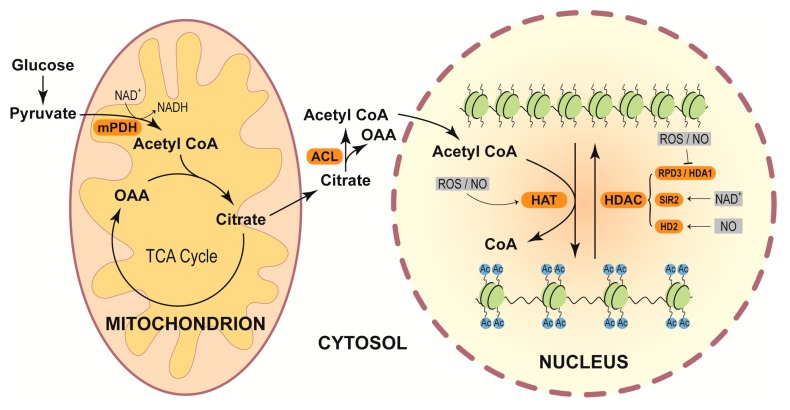Figure 3.
Redox components influence histone acetylations. In the cytoplasm, glucose is broken down to pyruvate, which enters into mitochondria, and is converted to acetyl CoA through mitochondrial pyruvate dehydrogenase (mPDH) by reducing NAD+. Acetyl CoA combines with oxaloacetate (OAA) produced in the TCA cycle to form citrate, which enters cytoplasm. In cytoplasm, citrate is converted back to OAA and acetyl CoA through ATP-citrate lyase (ACL). Acetyl CoA synthesized in the cytoplasm enters into the nucleus as the source supplier of acetyl group for the histone acetylation process. HAT utilizes the acetyl group from acetyl CoA to introduce acetylation marks (Ac) over the lysine residues of the histone tail, thus weakening the contact between DNA and histone and facilitating gene expression. HDAC removes histone acetyl group, leading to chromatin compaction. Different HAT and HDAC enzymes are affected by ROS, NO, and NAD+.

